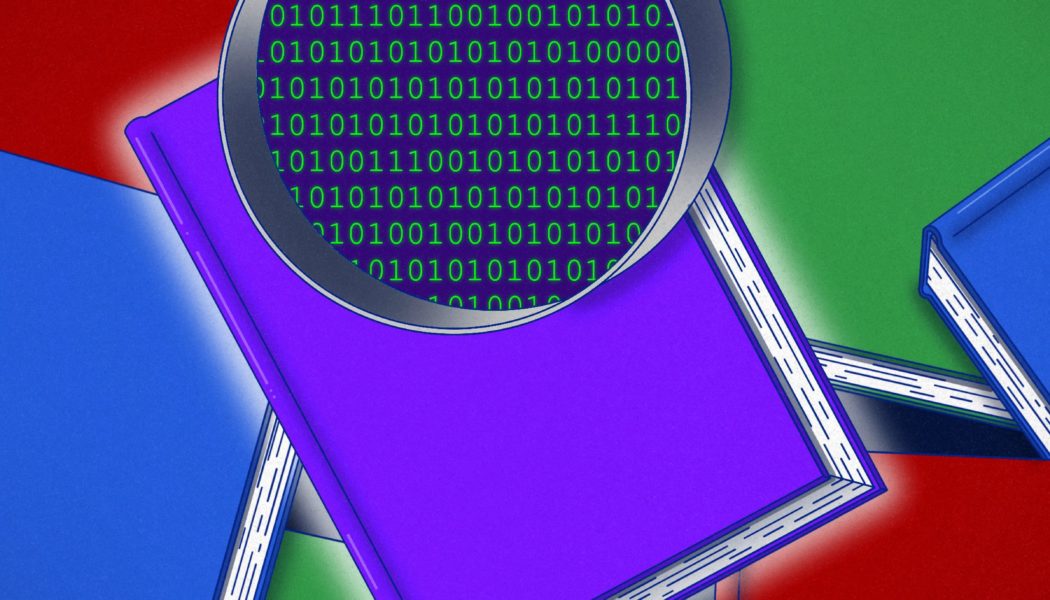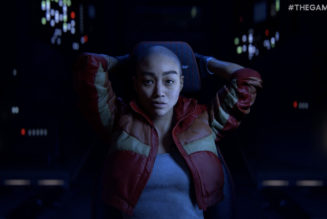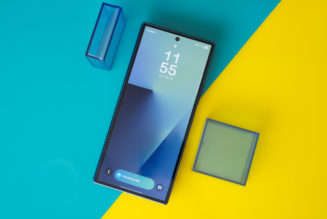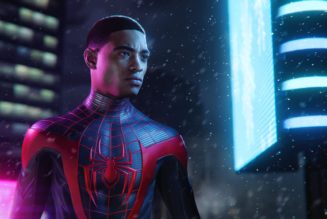Science fiction and fantasy authors are struggling with AI-generated media — and formulating strategies to deal with it.
Share this story
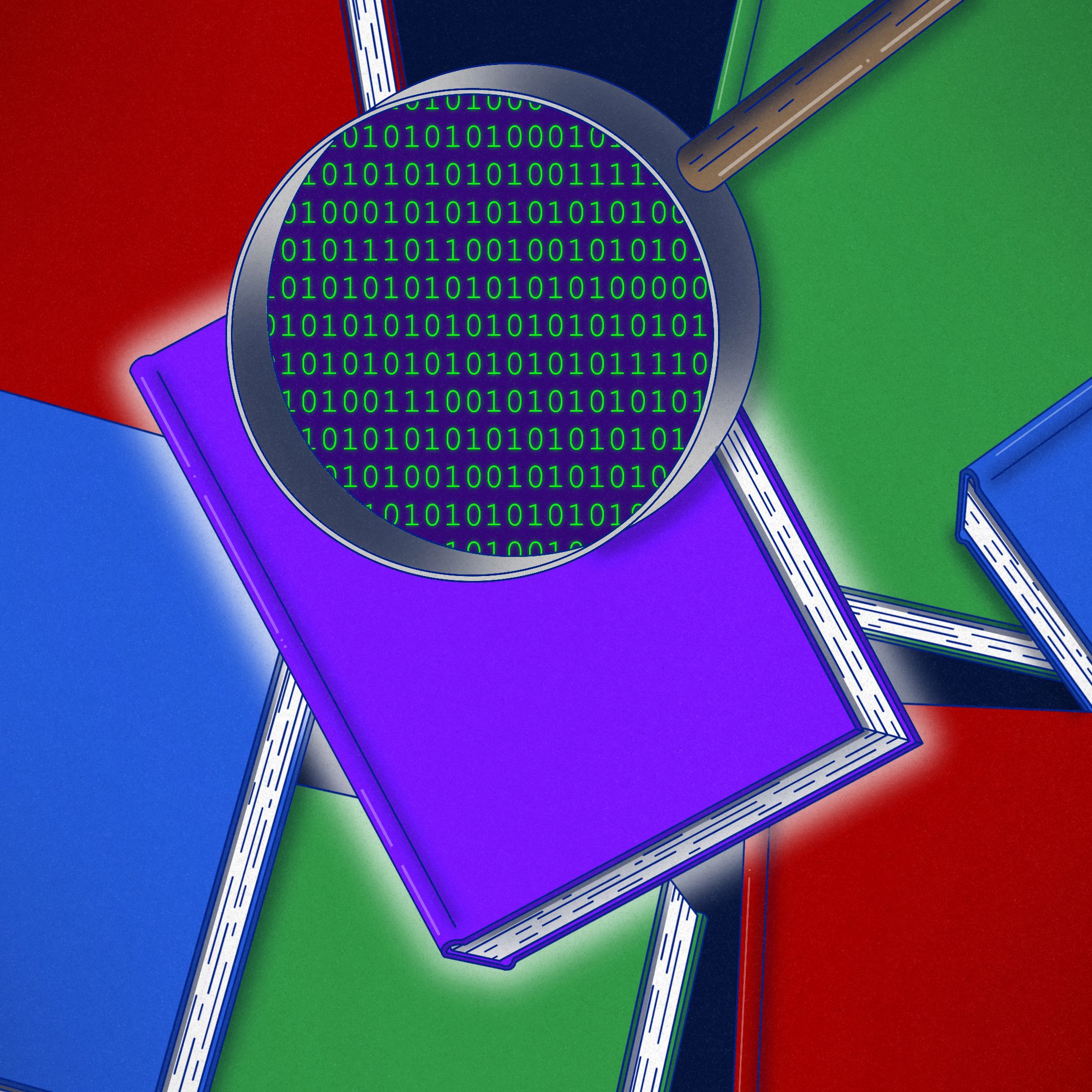
The book cover for M.V. Prindle’s Bob the Wizard shows a coiffed man in sunglasses, smoke dancing from his mouth as a gray, ominous sky swirls behind him. A small fairy-like creature flutters nearby, and the folds and shadows of Bob’s jacket and beard fade into one while a bright green key hangs around his neck. The book tells the story of a “shotgun-wielding ex-garbage man” on the hunt for his family’s killer, the chase winding through a mystical world.
Bob the Wizard’s cover was a hit. In May, it won the Self-Published Fantasy Blog-Off (SPFBO) cover contest, an annual competition run by author Mark Lawrence that highlights indie authors in the fantasy genre. But the victory didn’t last long. The same day the winner was announced, readers and fans on Twitter were questioning whether the art was created at least in part using AI tools. The incident highlighted a growing crisis of trust in science fiction and fantasy publishing: in a world where AI-generated media is common, do you know the work you’re looking at was made by a human?
The SPFBO’s cover contest explicitly outlawed using AI tools, and the winning artist, Sean Mauss, initially insisted that he had made the art himself. He even shared a trove of documents and Photoshop files that he said proved the finished product was his own. Readers found the evidence was unconvincing. Using a Photoshop layer in files the artist had shared, Twitter users scoured the archives of Midjourney, a generative AI system, and found images that matched elements in the Bob the Wizard cover. The username that created the images was even spotted in a file name. The striking cover art, it seemed, was simply a collage of Midjourney outputs.
Within a day, Mauss had withdrawn the submission, deactivated several social media accounts, and apparently taken a personal website offline. (An email sent to an address on an archived version of the site wasn’t returned.) Prindle, the book’s author, said on Twitter that he was misled and has since hired a new artist to do the cover. “I’ve woken up to compelling evidence that the cover was at least partly AI generated, breaking the rules of the contest,” Lawrence wrote on his blog. “So, in addition to having been withdrawn, it’s now also disqualified under the existing rules.”
But Lawrence went further than disqualifying Mauss’ entry. In the same blog post, he abandoned the idea of holding a cover contest in the future, saying there wouldn’t be a competition going forward. In Tweets, Lawrence makes clear he’s uninterested in litigating future debates about whether art is human or machine-made.
“I think it needs to be a separate contest, [organized] by someone with the necessary expertise and the appetite for controversy,” he wrote in response to someone suggesting a way forward. “That’s not me.” (Lawrence didn’t respond to requests for comment.)
The cover contest saga comes at a time when the fantasy and science fiction community is wrestling with what role, if any, generative AI tools have in the industry. Earlier this year, prominent magazines like Clarkesworld and Asimov’s Science Fiction said they were experiencing a deluge of low-quality AI-generated short stories, overwhelming their publications and, at times, even forcing outlets to temporarily close submissions. Though editors said they could spot the works almost immediately, sifting through the influx was a time-suck, forcing publishers to wade through a new kind of spam coming from people outside the industry. Now, the community of writers, artists, and readers is confronted with a new reality: AI-aided work that — at least at first — can pass for a human’s output.
Soon after the cover contest controversy began, other authors started to suspect they’d unwittingly paid for AI-generated work by Mauss. Michael R. Fletcher and Clayton W. Snyder had both been impressed by the Bob the Wizard cover, and they’d commissioned Mauss to produce art for two books back in April. “One of the things we specified [with Mauss] right off the bat was that none of this art be AI-generated in the first place. We wanted an actual working artist to do the art,” Snyder says. But the fiasco — and Mauss’ disappearance — suggested they’d been deceived.
At first, Fletcher wasn’t sure the work was AI-generated. “I didn’t know who to trust,” he says. By the next morning, he was convinced. “At that point, it was like, ‘Crap, how do we deal with this?’”
The authors showed their own covers to artists familiar with AI image generation. Tools like Midjourney sometimes leave behind clues — a file name with the prompt used to generate it, for instance, or elements that don’t match how the artist said they created their work. Anatomy or composition might be wonky. The experts’ conclusion: their work used generative AI elements, too.
“That was a breach of trust,” says Snyder. “At its core, we were lied to.” The pair set up a GoFundMe to pay for new art and quickly raised more than $2,000, which they plan to spend on commissioning another artist.
The past months have seen a string of controversies around AI and fiction, including bestselling SFF novels using covers with AI-generated stock art, as well as Clarkesworld’s spam problem. And the writing world is starting to formulate a response. Around the time the cover contest was ended, Neil Clarke, editor of Clarkesworld, published a first attempt to codify norms and expectations for AI software in the SFF publishing industry. The statement sketches out the framework for handling AI-generated work, addressing unsettled questions around the legality of training data, the efficacy of AI detection software, and the need for disclosures when these tools are used. (Tools to detect AI-generated text and imagery exist, but they remain unreliable and can be confused further if humans have edited the output.) Clarke has invited other industry members to sign on in agreement.
Some publishers have tried to preempt an embarrassing mistake by openly welcoming work that is created using AI software. NewMyths, a quarterly magazine, accepts submissions that use AI tools as long as they’re flagged as such and says it will add a label to any published content.
But so far, it appears to be an outlier. Sheila Williams, editor of Asimov’s, says her publication is still being deluged with low-quality AI-generated submissions. In response, she’s added an explicit line in submissions guidelines that Asimov’s doesn’t want AI-generated stories. Asimov’s strictly buys writing by humans, and Williams says continuing to do so is a way to build — and maintain — trust with readers and writers. There’s a fear that magazines will fill pages with free or cheap material produced via chatbot, though she says the quality is nowhere near publishable.
“You’d cancel your subscription,” Williams says.
But while Williams believes AI-generated fiction is still easy to spot, things like generated cover images could be harder. “I don’t feel confident it wouldn’t slip through — not 100 percent, not like fiction,” Williams says. When selecting cover art, Williams researches potential artists and consults her art department but contends that it may be easier for AI-generated art to evade detection.
And the SPFBO cover contest’s effects have rippled through the industry. The Self-Published Science Fiction Competition, which hosts a different cover contest, hinted that it may have to cancel its own awards, suggesting in tweets that the task of weeding out AI art may be too much.
Readers and community members responded negatively to the revelations about Bob the Wizard’s cover. But in the long term, it’s not clear if these tools will remain forbidden. Misrepresenting work as AI-free is one thing — but what happens if generative AI systems become more ingrained in the artistic process?
“There is a level at which computers have been making things easier in the arts for decades. Things are possible in Photoshop that weren’t possible before, and people are okay with that,” Fletcher says. “We’re in this awkward middle ground here, where people are coming down on both sides.”
Whatever happens with AI-generated media in the future, for now, the industry’s dynamics may be about to change. Snyder and Fletcher predict that more writers and artists will begin to have formal contracts when working together, which historically hasn’t been how the community operated. “I’ve got a dozen or so books out, [and for] every single cover, I have never had a written contract. It’s been verbal, maybe text messages via Twitter or Facebook,” Fletcher adds. “I have trusted that the artist is going to hand in what I’m asking for, and this is the first time that is not the case.”
The indie SFF publishing community is small, and artists are largely hired through word of mouth — including, as with Fletcher and Snyder, seeing the work they’ve done for other authors. Now, the pair is in talks with a handful of well-known artists to take on the project instead. Fletcher says that going forward, authors will likely want to work with more established artists with a solid portfolio and happy clients who can attest to their work.
“The artist who’s just starting out, who hasn’t done a book cover before, is going to be under some vicious scrutiny,” he says. “It’s going to be hard to land those first gigs, I suspect.”
